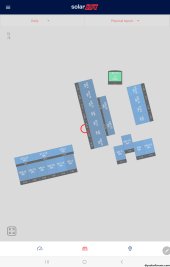Sleepingbeautyc
New Member
I have been trying to add a battery back up to my system and the thing i keep running into is that I can't find inverters and charge controllers that have specs that work. Does anyone know of a list that tracks all inverters and or charge controllers.
This site and a few blogs have given me leads. The solark and morningstar have promising products.
This is the spiel that i send to multiple manufacturers or solar suppliers
This site and a few blogs have given me leads. The solark and morningstar have promising products.
This is the spiel that i send to multiple manufacturers or solar suppliers
We have a grid tied system that was installed for us. We had not realized upon purchase that the system is useless when the power goes out. We live in the country and the power is not always reliable. We would like to add something to our system to make it hybrid. We understand there are a number of ways to do this. We are open to all but prefer the charge controller option.
1. We could replace the main inverter. (hybrid inverter replacement)
2. We could add a second inverter and a manual switch. (ac-coupled)
3. We could add a charge controller to the battery (dc-coupled)
We have been trying to find a viable option.
Our set up.
We have a 10.3kwh system. It is configured with 2 lines of 13 panels in series. The panels are the longi lr4-72hph. The grid tied inverter is the solaredge 10000h-us. There is a fireman's hard shutdown after the inverver but before out main panel. We have a renogy lycan 5000 battery that we would like to use.



